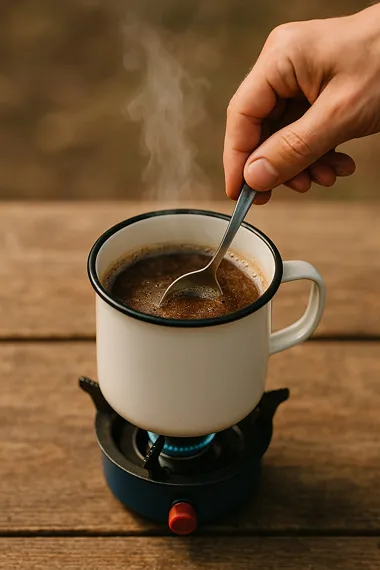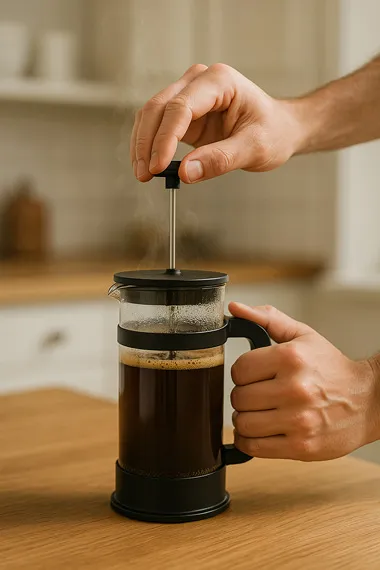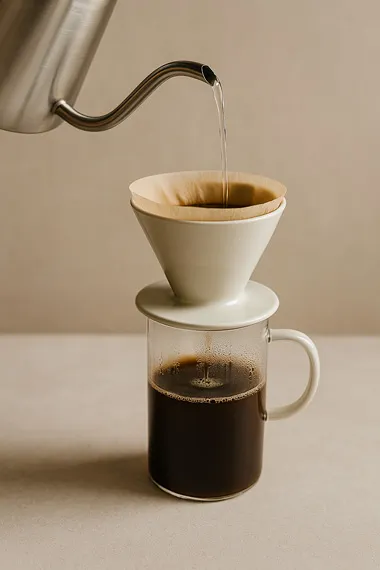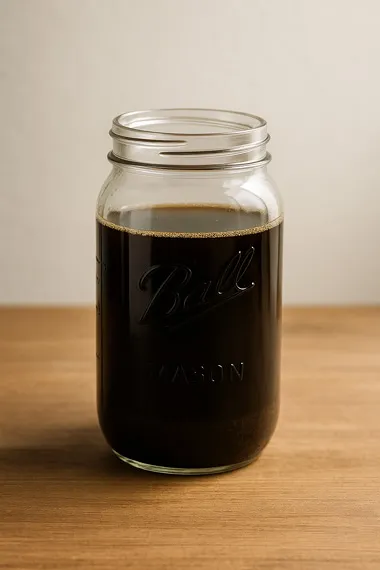RATING: 3.5/5 stars – Best ultra-budget espresso machine for beginners wil...

This article was last updated on September 16, 2025.
The power went out at 5 AM during an ice storm, and my first thought wasn’t about the food in the fridge or whether the heat would come back on – it was pure panic about how I’d make coffee. My electric grinder was useless, my programmable coffee maker was just an expensive paperweight, and even my electric kettle couldn’t help. That’s when I remembered my grandmother’s words: “People made coffee for centuries before electricity, and they weren’t walking around like zombies.”
She was right, of course. That morning, I made some of the best coffee I’d had in months using nothing but a saucepan and a kitchen strainer. It got me thinking about all the times we might need to brew coffee without electricity – camping trips, power outages, travel to remote places, or just wanting to simplify our morning routine.
These methods aren’t just emergency backup plans. Many of them produce coffee that’s actually better than what most electric machines manage. Plus, there’s something deeply satisfying about making great coffee with your hands and basic tools.
Before diving into specific methods, let’s cover the basics. Every non-electric brewing method needs three things: heat source, coffee grounds, and water. The heat source can be a gas stove, campfire, camping stove, or even a candle (though that takes forever). For coffee grounds, you’ll need to either buy pre-ground coffee or have a manual grinder – a mortar and pestle works in emergencies, though it’s quite the workout.
Pro tip: If you’re planning for power outages or camping, invest in a manual coffee grinder. They’re not expensive, and freshly ground coffee makes a huge difference in any brewing method.

This is the most basic method, requiring nothing more than a pot and heat source. Despite the rough name, cowboy coffee can be surprisingly good when done properly.
What you need: Pot, coarse ground coffee, water
How to do it:
The secret: That splash of cold water at the end makes grounds sink faster, giving you cleaner coffee. Don’t skip this step.

A French press doesn’t need electricity, just hot water. It’s probably the most foolproof method for consistently good coffee without power.
What you need: French press, coarse ground coffee, hot water
How to do it:
Why it works: The metal filter allows coffee oils through, creating rich, full-bodied coffee. It’s nearly impossible to mess up.

Manual pour-over coffee often tastes better than electric drip makers because you control every variable. All you need is a cone dripper and filters.
What you need: Pour-over dripper (V60, Chemex, or Melitta), paper filters, gooseneck kettle or steady pouring vessel
How to do it:
The technique: Pour slowly and steadily. The whole process should take 3-4 minutes. Fast pouring leads to uneven extraction.
The moka pot uses steam pressure to force water through coffee grounds, creating concentrated coffee similar to espresso. It’s completely stovetop-operated.
What you need: Moka pot, fine ground coffee, water
How to do it:
Important: Don’t let it “percolate” on heat after coffee starts coming out. This overcooks the coffee and makes it bitter.

This is the only method that needs zero heat – perfect when you have no way to heat water but still want coffee.
What you need: Large jar, coarse ground coffee, cold water, strainer
How to do it:
Planning ahead: Make this before your camping trip or when you know bad weather is coming. The concentrate keeps for a week refrigerated.
This ancient method creates thick, rich coffee that’s more like a coffee experience than just a drink. You’ll need very finely ground coffee – almost powder.
What you need: Small pot (ibrik if you have one), very fine ground coffee, sugar (optional)
How to do it:
Cultural note: Traditionally served in small cups because it’s very strong. The grounds settle at the bottom – don’t drink the last sip.
When you have ground coffee but no specialized equipment, you can create a makeshift drip system using kitchen items.
What you need: Large pot, smaller heat-proof container, clean cloth or fine strainer
How to do it:
Reality check: This is more of an emergency technique. It works, but requires patience and produces small amounts of coffee.
Water quality matters just as much without electricity. If your tap water tastes bad, your coffee will too. Use filtered or bottled water when possible.
Grind size is crucial. Coarse grinds for immersion methods (French press, cowboy coffee), fine grinds for pressure methods (moka pot), medium for pour-over. Wrong grind size ruins even perfect technique.
Temperature control without a thermometer: Water just off boiling is perfect for most methods. If you see violent bubbling, remove from heat and wait 30 seconds.
Pre-warm your equipment when possible. Rinse your French press or pour-over setup with hot water before brewing to maintain temperature.
Practice before you need it. Try these methods when you have power so you know what works when you actually need the backup plan.
If you only have whole beans, you have options:
Manual coffee grinder – Worth buying if you camp or live in an area with frequent power outages
Mortar and pestle – Hard work but effective for small amounts
Rolling pin method – Put beans in a bag and crush with rolling pin (see our Coffee Kitchen Hacks guide for details)
Hammer technique – Bag the beans and tap gently with hammer – louder but faster than rolling pin
Making coffee without electricity isn’t just about emergency preparedness – it’s about understanding that great coffee doesn’t require expensive machines. Some of my most memorable cups have come from these simple methods, whether around a campfire, during a power outage, or just experimenting on a quiet morning.
The key is choosing the right method for your situation. French press for reliability, pour-over for best flavor, moka pot for strong coffee, cold brew for advance preparation, and cowboy coffee when you literally have nothing but a pot and heat source.
Don’t wait for an emergency to try these techniques. Pick one that appeals to you and experiment this weekend. You might discover that your “backup” method actually makes better coffee than your electric machine ever did.
Besides, there’s something deeply satisfying about making great coffee with nothing but fire, water, and coffee grounds – the way it was done for centuries before we had machines to do everything for us.
Some posts on our site may contain amazon affiliate links. We may earn affiliate commission from amazon when you purchase through those links.
Robert says
“Put about 1/2 cup of ground coffee in one jar. Add about 1/2 cup of ground coffee.” … what ? how much coffee ? 1/2 cup … 1 cup ??
Heather says
@ Lori — I think that’s called an Aeropress.
lori says
I once found a coffee maker in a shop and now cannot find it anywhere. It was a clear plastice, non electric item, it looked like you placed a cone filter inside, added hot water, waited and then instead of a press you simply pushed a leaver and it would passively drip out the bottom into your cup. Do you know what this might be called?